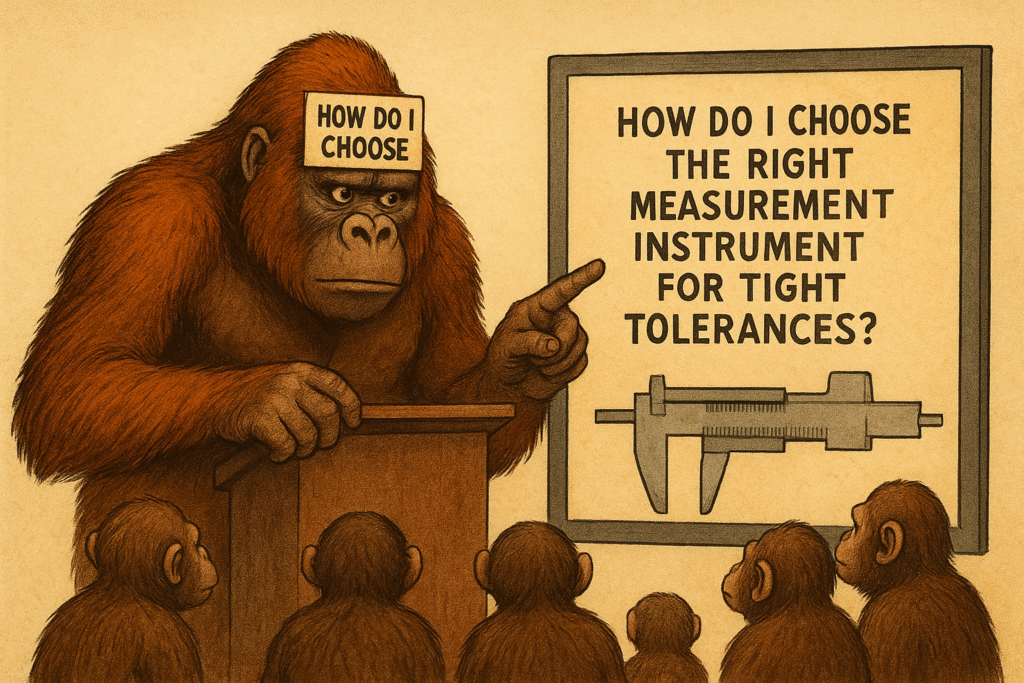
Introduction: When Microns Matter
In high-precision manufacturing, the difference between success and failure often comes down to microns.
Selecting the correct measurement instrument isn’t just a technical decision — it’s a strategic one.
The wrong tool can produce misleading data, cause false rejects, or even disrupt entire production runs.
So how do you choose the right instrument when tolerances are tight and accuracy is non-negotiable?
1. Define What You Need to Measure — and How Precisely
Every measurement task begins with a clear understanding of what you’re measuring (length, angle, form, roughness, etc.) and how precise you need to be.
A general rule of thumb:
The instrument’s resolution should be at least 10 times smaller than the tolerance you need to verify.
For example, if you’re measuring a tolerance of ±0.01 mm, your tool should have a resolution of 0.001 mm or better.
If the requirement drops to ±0.001 mm, you’ll need a lab-grade instrument such as a CMM or laser interferometer.
2. Match the Instrument to the Application
Different instruments excel at different measurement scales and geometries. Here’s a quick guide:
| Measurement Type | Recommended Instrument | Typical Accuracy |
| Linear dimensions | Caliper, Micrometer | 10–1 µm |
| Bore/hole size | Bore gauge, Air gauge | 2–5 µm |
| Surface flatness | Optical flat, Interferometer | <1 µm |
| Complex geometry | CMM, Optical scanner | 1–5 µm |
| Surface roughness | Profilometer | 0.1–1 µm |
When tolerances are especially tight, avoid hand tools like calipers for final verification — they’re great for setup checks but lack the stability for micron-level accuracy.
3. Consider Environment and Operator Influence
Even the best instrument is only as good as its environment and operator.
Temperature, vibration, and humidity all affect results, especially at the micron level.
Always measure in a controlled environment — ideally 20 ± 0.5 °C — and allow both part and instrument to stabilize thermally.
Operator skill also matters: a micrometer’s torque, a probe’s touch, or even reading parallax can introduce errors.
For critical measurements, automated or contactless instruments like CMMs or vision systems reduce variability.
4. Evaluate Uncertainty, Not Just Accuracy
Don’t confuse accuracy with uncertainty. Accuracy describes how close a result is to the true value, while uncertainty quantifies confidence in that result.
Before purchasing or using a tool, check its calibration certificate and uncertainty statement.
If you can’t justify that your uncertainty is smaller than your tolerance requirement, your measurements may not be valid — no matter how “precise” the tool appears.
Conclusion: The Right Tool Builds Trust
Choosing the right measurement instrument isn’t just about compliance — it’s about confidence.
The right tool, properly calibrated and used in the right conditions, transforms measurement from a guess into a guarantee.
Make every micron count — learn more about precision tools and metrology best practices at Metrology Advisor

Comments